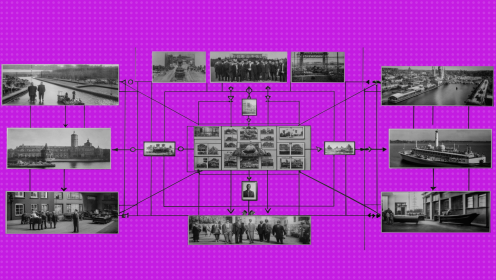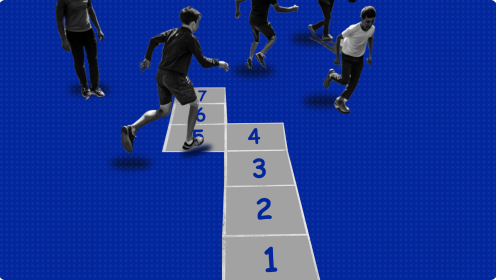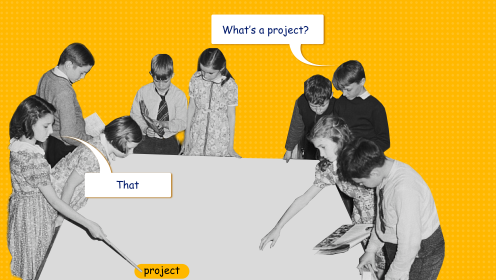I noticed an interesting habit behind me - I love to divide my activities by time. For example, I flip through the social media feed and think: “I’ll sit on the phone until 11:30, and then work.” It's cool, but most likely I won't be invited to the TED lecture with this - everything has already been thought up before me. This method even has a name, and more than one: time-boxing or time-blocking. Choose any, because the essence is the same, the main thing is to be useful.
Time boxing has a very simple idea - you need to break the whole day into blocks (time boxes) and within one block, focus on one task, without being distracted by anything. As soon as the block ends, you switch to the next one, even if you didn’t have time to finish something (although, this is a moot point, but more on that later). It is usually advised to make blocks lasting 30-50 minutes, breaking them up with breaks of 10-15 minutes (sometimes they talk about longer breaks - 20 minutes after 90 minutes of work, but choose whichever is convenient for you).
Why time blocking works
According to Parkinson's law, the work will take all the time that you allocate for it. Therefore, if you do not limit the time to complete any task, then it is quite possible to do one thing all day. And you seem to be doing something, but at the end of the day it turns out that there is no smell of any result. But if you work on a task within a limited period of time, there is a chance, if not to do everything-everything-everything in one day, but at least to move forward in all important directions.
In addition to this obvious thought, timeboxing has a number of other advantages that make the method truly effective and popular. With time blocking you:
- Feel the time. At first, it seems that 30-50 minutes of one time-box is not enough for deep immersion in the task, but gradually you get used to doing it not only quickly, but also well.
- You focus better. This is perhaps the most important advantage - you completely focus on one single task. Often this is already enough to increase your productivity.
- You can evaluate your progress. Stopping after each block helps you step back a bit and look at the big picture. This is very important so as not to get lost in the routine.
- Protect yourself from burnout. Timeboxing helps fight burnout through a variety of tasks. I love my job, I do it all the time, even on weekends. But in doing so, I run the risk of burning out. Therefore, I try to give myself the opportunity to switch to another job, hobby or just relax.

Who should block time
Many famous people like to block time: Elon Musk, Bill Gates, etc. But don’t get upset and don’t reproach yourself if time blocking is difficult for you, if you are distracted, you can’t focus on one task, etc. We are all different . Someone can easily switch between tasks regularly, and someone likes to keep the focus on one until they finish it.
Time blocking is suitable if you:
- Difficulty focusing on one task. The main principle of time blocking is that you can’t be distracted by anything. Sitting on the phone, looking out the window at the birds, peeping into the monitor of a colleague, starting work on another task, etc. is strictly prohibited - all this reduces your productivity within the time box. When there is no strict deadline, it is easier to switch attention. And when you know that in 40 minutes you can do something else, it's easier to focus.
- Familiar with procrastination. Working with a time limit motivates you to optimize processes - you have to work in an accelerated mode in order to meet the deadline, and there is no time for rest.
- Used to putting everything off for “later” and constantly breaking deadlines. Time blocking helps you move forward in parallel in several tasks, so there is no point in putting things off - everything important can be done if you manage your time wisely.
Types of time boxes
The time blocks into which you break your day are "hard" and "soft"..
When the “soft” block is over, but the task has not yet been done, you can take an additional 10-20 minutes. It's great not to feel boxed in. But when adding extra time, keep in mind that this is how the entire schedule moves out for the day, and it will have to be adjusted. Reduce some blocks, and sacrifice some altogether.
With a “hard” time box, you won’t relax. When time runs out, you must in any case move on to the next block, even if something did not have time to finish. It will be possible to finish it only the next day. It can be a little depressing, but such a rigid framework has its own advantage - you feel the time, appreciate it and spend it more rationally.
Keep in mind that you can't switch between "soft" and "hard" timeboxes on the fly. If you decide to put yourself in a rigid framework, but leave a loophole for yourself - add extra time - your brain will definitely use it. In short, choose one kind of time box and stick to it strictly.
How to use timeboxing
Write down all your tasks
First, write down in a notebook or “Notes” on your phone or computer all the tasks that need to be solved in the next day or week. As with GTD, this process can take a long time. Sit, think and try to remember all the things: from a work mailing on Fridays to an evening trip to the grocery store.
Prioritize
Surely, some tasks need to be done before the rest. Therefore, the next step is to sort the tasks by priority and estimate how long it will take to solve them. So you decide on the order and size of the time boxes.
Create a schedule
Now we need to create a schedule consisting of blocks somewhere. It is convenient for someone to write down everything in a notebook or on a piece of paper - it is fast and does not depend on the Internet or electricity.
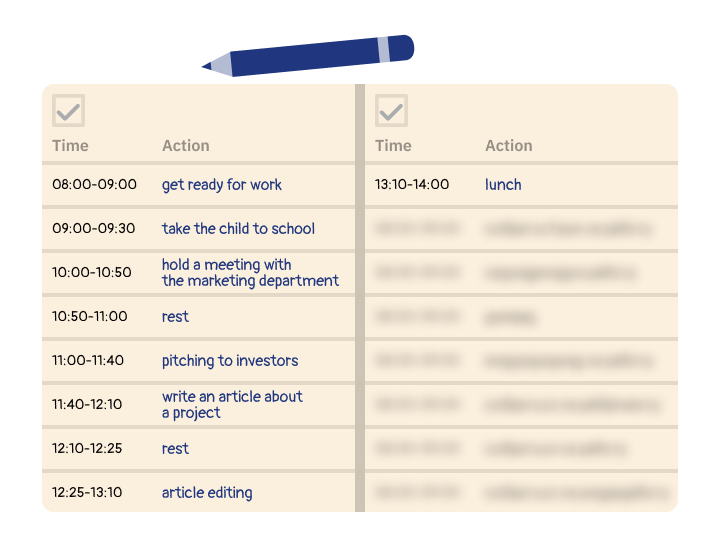
I myself initially wrote everything out by hand in a notebook, but then I “moved” to Google Calendar - I prefer “soft” time boxes, and it’s much easier to edit them than on a piece of paper.
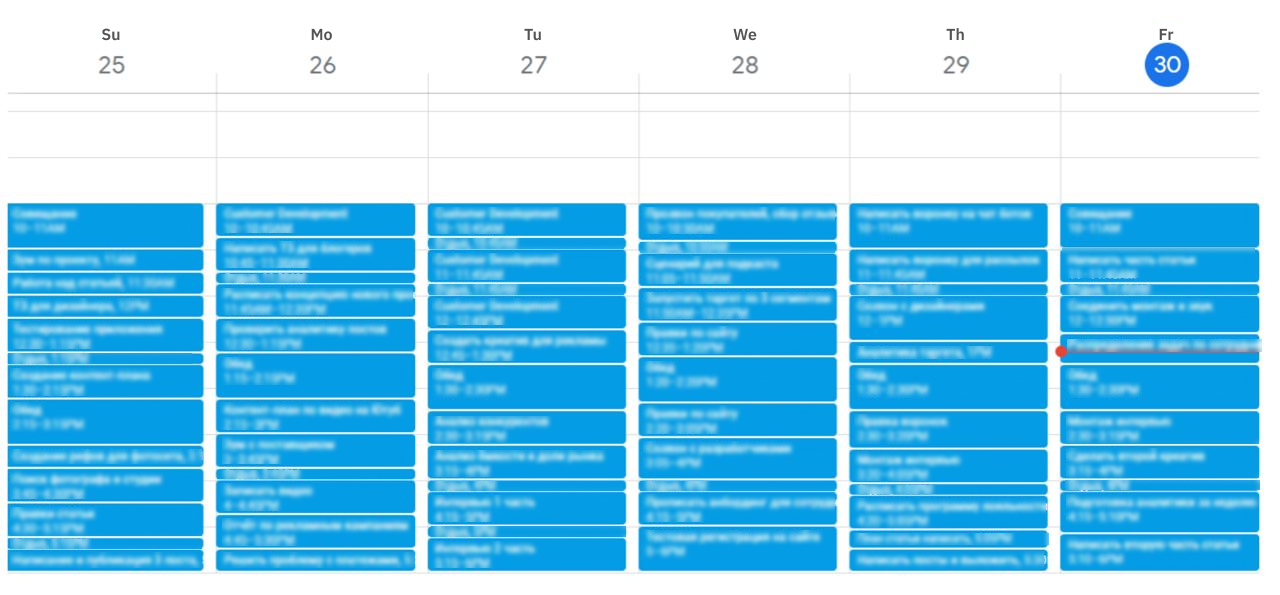
Another plus of the calendar is that it will remind you when one time box ends and you need to move on to the next one. This helps to further unload the brain, not to look at the clock every second and fully focus on the task.
If you decide to use a time block, keep in mind that you need to plan blocks for a week in advance, otherwise there will be no sense.
Time blocking is suitable if you want to optimize your activities and not burn out. For me, switching between tasks helps me diversify my work and do more when time is running out.
At first, it can be difficult to block time: a huge array of tasks needs to be somehow stuffed into blocks, and you have to quickly delve into the essence of the task, and complete it no less quickly. But time blocking helps you learn to feel the time and not drag things out for a long time. It's worth it.











